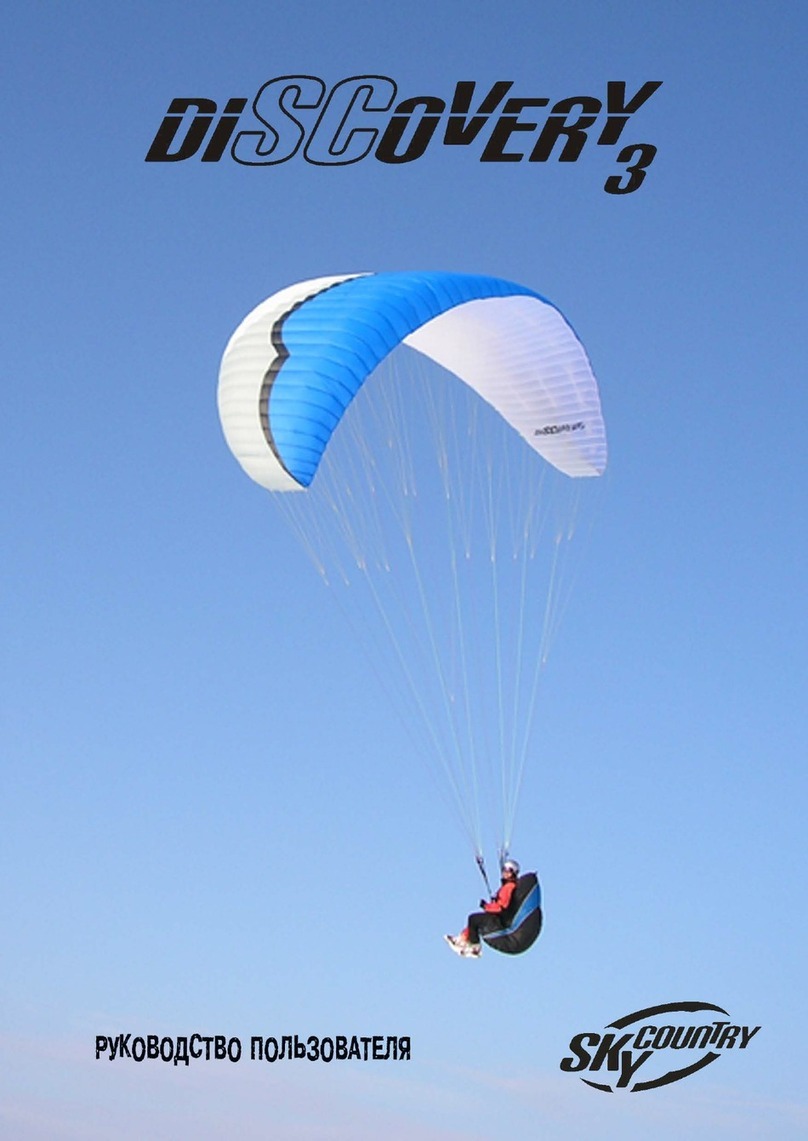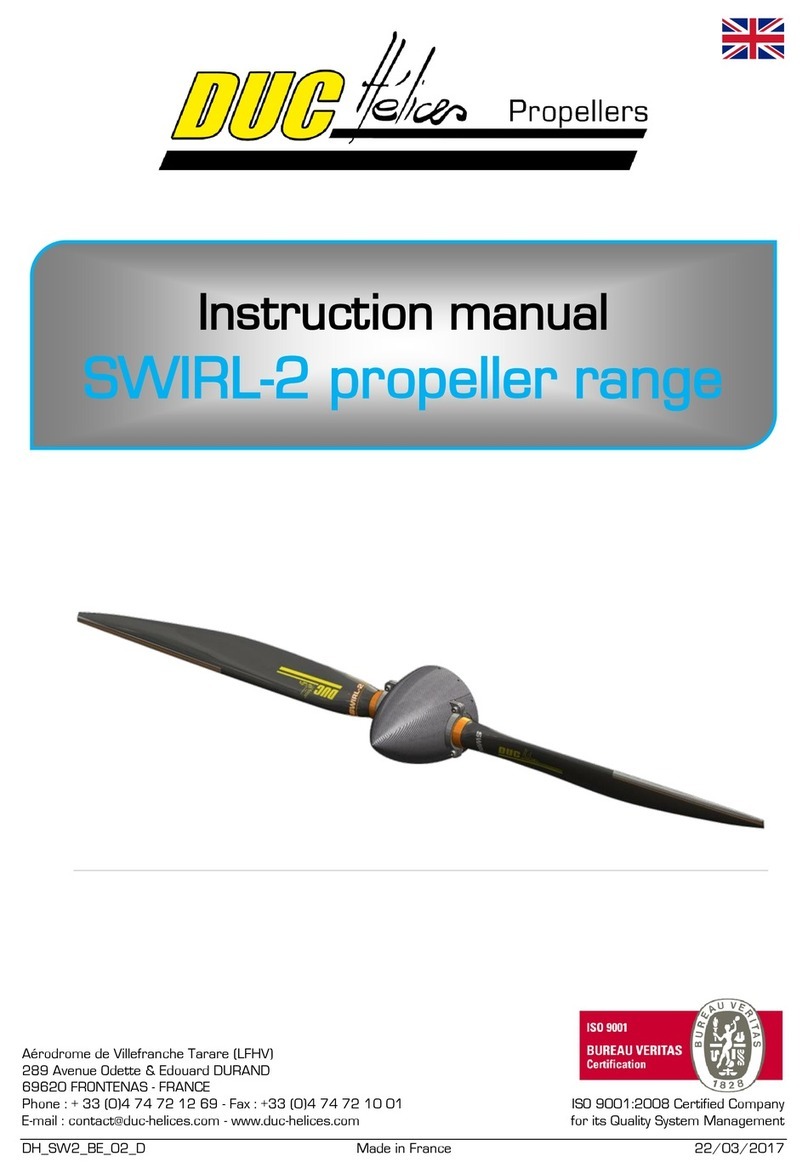Esqual VM-1C User manual

Arsi AB – Esqual
www.arsi.se
FLIGHT & OPERATION MANUAL ESQUAL VM-1
Page 1 of 54
FLIGHT & OPERATION
MANUAL
ESQUAL
VM-1C
NOTICE
The information contained in this manual is to be used as guideline for the owner - pilot.
(Kit built aircraft may vary substantially, therefore good judgment and discretion must be used.)
(Edition 2018-1)

Arsi AB – Esqual
www.arsi.se
FLIGHT & OPERATION MANUAL ESQUAL VM-1
Page 2 of 54
Model: Esqual VM 1C
Manufacturer: Arsi AB
Traversgatan 2
441 34 Alingsås – Sweden
+46 (0)322 611502
Registration nr: ____________
Serial nr: ____________
Man. year: ____________
This aeroplane must be operated in compliance with the information and limitations
contained herein.
This POH must be available on board the aeroplane.
WARNING
This Aircraft is not fitted with a certified engine. A power failure can occur at any time. Never fly
over any area on to which a safe landing cannot be made in the event of an engine failure
Flying in this and any aircraft can be dangerous either as the passenger or the pilot. You agree to fly
in this aircraft entirely at your own risk.
Any acute or long term medical conditions or the taking of any medications associated with any
acute or long term condition will increase your risk of flying in this aircraft safely and may lead to
you becoming incapacitated at the controls. This includes the taking of any social or recreational
drugs, alcohol, diving using an aqua lung , recent blood donation, cold or flu, ear infection.
On board the aircraft please ensure that loose articles are secured before flight. Loose items can jam
the controls leading to a loss of control.
Stalling, spinning or any aerobatic manoeuvres during any stage of flight may lead to a loss of
control.
The parachute handle safety pin can be removed at the pilots discretion before flight. Failure to do
so may result in the pilots' inability to deploy the parachute due to incapacity, adverse G and or
aerodynamic forces resulting from mid air collision or loss of control.

Arsi AB – Esqual
www.arsi.se
FLIGHT & OPERATION MANUAL ESQUAL VM-1
Page 3 of 54
AMENDMENT RECORD
Issue Details of change Date Auth by
1 Initial issue 2018-10-15 SA / AA

Arsi AB – Esqual
www.arsi.se
FLIGHT & OPERATION MANUAL ESQUAL VM-1
Page 4 of 54
INDEX
CHAPTER 0 INTRODUCTION
CHAPTER 1 GENERAL INFORMATION
1.1 CHARACTERISTICS
1.2 DESCRIPTION
1.3 REFUELING
1.4 HOW TO MOVE THE ESQUAL WHEN STOPPED
1.5 ANCHORING
1.6 BOARDING
1.7 CANOPY CARE
1.8 COMPOSITE & GEL COAT CARE
1.9 SYMBOLS AND ABBREVIATIONS
CHAPTER 2 POWERPLANT / AIRCRAFT LIMITATIONS /
ELECTRICAL SYSTEM
2.1 ENGINE TYPE
2.2 FUEL CONSUMPTION
2.3 PERFORMANCE DATA
2.4 FUEL & LUBRICANT
2.5 OPERATING SPEEDS & LIMITS
2.6 PROPELLER
2.7 AIRCRAFT OPERATING LIMITATIONS
2.8 RESCUE SYSTEM
CHAPTER 3 PLACARDS AND MINIMUM EQUIPMENT LIST
3.1 AIRSPEED INDICATOR RANGE MARKINGS
3.2 OPERATING LIMITATIONS MARKINGS IN THE EFIS / PANEL
3.3 PASSENGER WARNING
3.4 “NO INTENTIONAL SPINS”
3.5 MISCELLANEOUS PLACARDS AND MARKINGS
3.6 TYPE PLACARD
3.7 MINIMUM EQUIPMENT
CHAPTER 4 MAINTENANCE MANUALS
4.1 INTRODUCTION
4.2 AIRFRAME MAINTENACE
4.3 ENGINE MAINTENACE
4.4 PROP MAINTENANCE
4.5 RESCUE SYSTEM MAINTENANCE
4.7 ELECTRICAL SYSTEM MAINTENANCE
CHAPTER 5 COCKPIT LAYOUT/ NORMAL OPERATING
PROCEDURES
5.1 COCKPIT LAYOUT
5.2 PRE-FLIGHT INSPECTION

Arsi AB – Esqual
www.arsi.se
FLIGHT & OPERATION MANUAL ESQUAL VM-1
Page 5 of 54
5.3 BEFORE STARTING ENGINE
5.4 ENGINE START
5.5 ENGINE WARM-UP
5.6 TAXI
5.7 CHECK BEFORE TAKING OFF
5.8 TAKE OFF
5.9 CLIMB
5.10 CRUISE
5.11 DESCENT
5.12 APPROACH
5.13 DOWNWIND
5.14 BASE LEG
5.15 LANDING
5.16 BALKED LANDING
5.17 AFTER LANDING
5.18 NORMAL OPERATING DATA
CHAPTER 6 EMERGENCY PROCEDURES
6.1 INTRODUCTION
6.2 GENERAL RECOMMENDATIONS FOR EMERGENCY PREVENTION
6.3 AIRSPEED FOR EMERGENCY OPERATION
6.4 ENGINE FAILURES
6.5 FIRES
6.6 DITCHING
6.7 ICING
6.8 STALL WITHOUT ENGINE
6.9 STALL WITH ENGINE
6.10 SPIN
6.11 LANDING WITH FLAT MAIN TIRES
CHAPTER 7 FLIGHT PERFORMANCE
7.1 TAKE OFF DISTANCE
7.2 LANDING DISTANCE
7.3 CLIMB
7.4 CRUISE SPEED
7.5 AIRCRAFT RANGE
7.6 FUEL CONSUMPTION
7.7 MAXIMUM ALTITUDE
CHAPTER 8 WEIGHT AND BALANCE
8.1 EMPTY WEIGHT
8.2 REFERENCE DATUM LINE (RDL) AND CENTER OF CRAVITY (C.G.) LIMITS
8.3 CENTER OF GRAVITY CALCULATIONS OF AN EMPTY AIRCRAFT
8.4 HISTORY AND WEIGHTS
8.5 MINIMUM EQUIPMENT LIST
8.6 ADDITIONAL EQUIPMENT LIST

Arsi AB – Esqual
www.arsi.se
FLIGHT & OPERATION MANUAL ESQUAL VM-1
Page 6 of 54
CHAPTER 0
INTRODUCTION
The VM-1 Esqual is a sport airplane enclosed in the airplane & ULM category.
Before attempting to fly, it is obligatory to be fully aware of all the information and procedures
regarding the Esqual and its engine.
It is also strongly recommended to study all the documents in order to become familiar with all
the details about the Esqual.
The company recommends a check ride from an instructor or another experienced pilot, who is
familiar with the Esqual, to ensure you are proficient with the plane.
This Flight & Operation Manual applies only to the VM-1C Esqual and contains the
airworthiness limitations and essential operating data for this aircraft.
The pilot in command shall comply with all requirements, procedures and limitations with
respect to the operation of the aircraft set out in the Flight & Operation Manual for the Esqual.
It is the owner’s responsibility to incorporate in this manual all amendments and to enter the
data of incorporation and his signature on the appropriate amendment Record Sheet.
Operating limitations, instrument markings and basic placards necessary for the safe operation
of the Esqual, its engine, standard systems and standard equipment are included in this manual.
Observance of these limitations is required.
The Esqual shall be operated so that the limitations and instructions included in this manual are
observed.
This manual provides checklist and other procedures for coping with normal operation and
emergencies that may occur.
Emergencies caused by airplane malfunction are rare if proper preflight inspection and
maintenance are practiced.
However, should an emergency arise the basic guidelines outlined in the manual should be
considered and applied as necessary to correct the problem.

Arsi AB – Esqual
www.arsi.se
FLIGHT & OPERATION MANUAL ESQUAL VM-1
Page 7 of 54
CHAPTER 1
GENERAL
INFORMATION
1.1 CHARACTERISTICS
1.2 DESCRIPTION
1.3 REFUELING
1.4 HOW TO MOVE THE ESQUAL WHEN STOPPED
1.5 ANCHORING
1.6 BOARDING
1.7 CANOPY CARE
1.8 COMPOSITE & GEL COAT CARE
1.9 SYMBOLS AND ABBREVIATIONS

Arsi AB – Esqual
www.arsi.se
FLIGHT & OPERATION MANUAL ESQUAL VM-1
Page 8 of 54
1.1 CHARACTERISTICS

Arsi AB – Esqual
www.arsi.se
FLIGHT & OPERATION MANUAL ESQUAL VM-1
Page 9 of 54
Wing Span 9.085 m Brakes Independent Hydraulic
Length 6.170m Wing foil NLF (1) –0215F
Height 2.025 m Engine Rotax 912 uls
Wing Surface 9.0 m² Fuel AVGAS 100 LL
MOGAS min. 95 OCT
Wing Loading 52,83 Kg/m² Propeller Duc Swirl inc. 1660mm
Maximum Weight 472,5 Kg Turn Rate 10.00 m
Empty Weight 260-297,5kg Cockpit Width 1.10 m
1.2 DESCRIPTION
The Esqual is a two seater light plane manufactured in carbon fibre with high density PVC
foam and Epoxy resins. Laminated in a mould and vacuum cured in an oven at constantly
controlled temperature and humidity. The fuselage is monocoque.
The low cantilever wing has positive changing flaps (as high lift devices). The wing structure
has a composite sandwich skin with a main double “T” composite spar and an accessory spar
near the trailing edge.
The empennage has a conventional cross shape.
The cockpit seats are side by side.
The landing gear of the Esqual has a classic tricycle gear which is made of 7075 T6 aluminum
grade. The main gear legs are suspended in the main carry through beam together with the
reinforced wing spar zone.
The nose gear leg is supported in the engine mount and equipped with a free swivel nose wheel.
The main wheels are equipped with independent hydraulic toe brakes for steering.
The safety belts have four anchoring points.
The rudder pedals are adjustable in flight.
The luggage compartment (with 50lts capacity, 18 kg) is located behind the seats and can be
accessed during flight.
An optional ballistic parachute can be mounted.
The safety reinforced cockpit has twin axle composite beams all around its frame.
Independent ventilation openings are standard; a cabin heater is an option.
1.3 REFUELING
There are two independent fuel tanks, one in each wing, with their openings on the upper
surface. The fuel caps do not protrude over the wing surface and can be unscrewed with the
Esqual key-ring. It is always recommended to filter the fuel and to attach a mass wire to the
exhaust pipe when refueling.

Arsi AB – Esqual
www.arsi.se
FLIGHT & OPERATION MANUAL ESQUAL VM-1
Page 10 of 54
1.4 HOW TO MOVE THE EQUAL WHEN STOPPED
The Esqual can be easily pulled at the propeller blades near the spinner.
You should never pull from the outer part of the blades.
The basic version does not have a parking brake. Wheel blocks should be used to secure it on
the ramp.
The easiest way to move the Esqual backwards is done according to the picture below.
1.5 ANCHORING PLACES
In case you have to park the Esqual on a ramp (outside hangar), we recommend anchoring it to
the floor with ropes attached to the external flap hinge and if needed also at the propeller hub.
1.6 BOARDING THE ESQUAL
From the leading edge, step onto the place marked with anti skidding stickers on the wing next
to the fuselage.
1.7 CARE OF THE CANOPY
The construction of the Esqual’s canopy allows it to rise to the vertical position and facilitates
access to the cabin.
Nevertheless, due to its large surface, there is a risk of being damaged if it is left open.
As it is usually windy on the airfields, a wind gust could close it, damaging the canopy or the
cabin frame.
Never start the engine with the canopy open or unlatched.
The frame is manufactured of carbon/epoxy as the rest of the aircraft.
During the construction process, when adjusting the Metacrilate of the canopy frame, there are
stress forces that tend to settle as time passes.
The contraction/dilatation phenomena produced due to temperature changes can contribute to
distort the canopy and consequently will not fit well in the frame on its bed.
Therefore it is recommended to always store the plane with its canopy well closed.
In areas of bright sunlight, protect it with a white or clear fabric cover.

Arsi AB – Esqual
www.arsi.se
FLIGHT & OPERATION MANUAL ESQUAL VM-1
Page 11 of 54
In spite of following all these recommendations do not worry if you notice slight variations in
the canopy adjustment in summer.
When in lower latitude, keep in mind magnifying glass effect of the high surface canopy that
quickly increases the cabin inner temperature when taxiing.
The tinned canopy with UV protection allows you to fly normally in hot climates.
Always fly with a cap and sunglasses in summer.
Take into account dehydration on long flights and have a water bottle on board.
1.8 CARE OF THE CARBON FIBER AND COLOURING
The manufacture in compound materials minimizes both aircraft structural revision and surface
maintenance care. However, it has to be emphasized that there are several details that
specifically affect fiber and resin laminated structures.
Fiber is especially sensitive to ultraviolet radiation. The colour layer protects the inner
laminate from the effects of radiation. Thus, a quick repair of any scratch or knock that
has peeled the colour protection, is of vital importance.
It is highly recommended to avoid painting the aircraft with dark colors (which absorb more
radiating energy).
After any minor crash or hard landing, check for early signs of separation of the pressed fiber
layers (de-lamination) on the pieces subject to higher mechanical efforts (wing main spar).
When in doubt ask your authorized dealer before flying again. Protect the Esqual from humidity
and extreme temperature changes with covers if it has to be stored outside for a few days.
1.9 SYMBOLS AND ABBREVIATIONS
International standard Atmosphere ISA
Atmosphere Atm.-bar
Centigrade degrees (Celsius) °C
Litres Lts
Kilograms Kg
Kilowatt kW
Square Meters m²
Cubic Meters m³
Indicated Airspeed IAS
Stall Speed Vs1
Flap extended Stall Speed Vso
Manouvre Speed Va
Maximum Speed (never exceed) VNE
Flap extended maximum Speed Vfe
True Airspeed TAS
Note:
VNE is always understood as a true airspeed.
Maneuver speed is the maximum airspeed that allows deflecting completely any command
surface without overstressing the airplane structure.

Arsi AB – Esqual
www.arsi.se
FLIGHT & OPERATION MANUAL ESQUAL VM-1
Page 12 of 54
CHAPTER 2
POWERPLANT & AIRCRAFT
LIMITATIONS
2.1 ENGINE TYPE
A. Rotax 912 ULS Engine
2.2 FUEL CONSUMPTION
A. Rotax 912 ULS Engine
2.3 PERFORMANCE DATA
A. Rotax 912 ULS Engine
2.4 FUEL & LUBRICANT
A. Rotax 912 ULS Engine
2.5 OPERATING SPEEDS & LIMITS
A. Rotax 912 ULS Engine
2.6 PROPELLER
A. Duc swirl inconell
2.7 AIRCRAFT OPERATING LIMITATIONS
2.8 ELECTRICAL SYSTEM
2.8 RESCUE SYSTEM

Arsi AB – Esqual
www.arsi.se
FLIGHT & OPERATION MANUAL ESQUAL VM-1
Page 13 of 54
2.1 ENGINE TYPE
A. Rotax 912 ULS Engine
Dimensions and Weights
Bore: 84 mm
Stroke: 61.0 mm
Displacement: 1,352.2 cc
Cylinders: 4 cyl. horizontally opposed (boxer)
Compression Ratio: 10.5:1
Direction of rotation on prop shaft: Counter-clockwise, looking at p.t.o. side of engine
Engine Curb Weight: 76 Kg complete with engine oil, exhaust and
starter motor.
Reduction gear 2,43:1
Normal Equipment
Ignition Unit: Ducati Ddual CDI
Ignition Timing: 4° up to 1000 RPM above 26°
Spark Plugs: DCPR8E
Electrode Gap: 0,7 – 0,8 mm
Generator: 13.5 V / 250 W DC @ 5500 rpm
DC Output: 250 W
Carburetor: 2 CD
Fuel Filtration: 0.1 mm (100 Micron) maximum particle size.
Starting System: Electric starter
Cooling System: Liquid-cooled cylinder heads, air-cooled cylinder
2.2 FUEL CONSUMPTION
A. Rotax 912 ULS Engine
At take-off performance
27.0 lts/h
At maximum continuous performance
25.0 lts/h
At 75% continuous performance (cruise) 18.5 lts/h
Specific consumption at maximum continuous performance
285 g/kWh
2.3 PERFORMANCE DATA
A. Rotax 912 ULS Engine
Take-off performance (73.5 kW) at 5.800 rev/min.
Maximum continuous performance
(69.0 kW) at 5.500 rev/min.
Acceleration
5 seconds maximum at –0.5 G

Arsi AB – Esqual
www.arsi.se
FLIGHT & OPERATION MANUAL ESQUAL VM-1
Page 14 of 54
2.4 FUEL & LUBRICANT
A. Rotax 912 ULS Engine
Fuel:
Automotive unleaded gasoline (RON 95/98).
The use of aviation gasoline (AVGAS 100LL) produces, due to its higher lead
content, the wear of the valve seats. Moreover, the sediments in the combustion
chamber will increase and the lead sediments in the lubricating system will also
increase. Therefore, you should only use AVGAS if you encounter problems with
the fuel being steamed or if any other fuel types are not available.
Lubricant:
We recommend using AeroShell
Oil Sport Plus 4 or oil recommended in
The Rotax Manual.
Oil capacity
3 L. (minimum 2 L)
Oil consumption
0.1 L/h (max.)
2.5 OPERATING SPEEDS & LIMITS
A. Rotax 912 ULS Engine
Take-Off Speed: 5.800 rev/min. (5 min.)
Maximum Continuous Speed: 5.500 rev/min.
Idle Speed: Ca 1.400 rev/min.
Oil Pressure: Maximum: 7 bar
Attention: For a short period admissible at cold start
Minimum: 0.8 bar (12 psi) (below 3.500 rev/min.)
Normal: 2.0 - 5.0 bar (29 - 73 psi) (above 3.500 rev/min.)
Oil Temperature: Maximum 130° C (266°F)
Minimum 50° C (120°F)
Normal 90° - 110° C (190° - 230°F)
Cylinder Head Temp. Maximum: 135°C (284°F) reading at observation point of the hottest
cylinder head, either no. 2 or no. 3
Engine start,
operating temp.
Maximum: 50° C (120°F)
Minimum: -25° C (-13°F)
Fuel Pressure Maximum: 0.4 bar (5.8 psi)
Minimum: 0.15 bar (2.2 psi)
Exhaust Gas Temp. Max. contin: 800°C
Max. 5 min.: 850°C
Max. T/O: 880°C
2.6 PROPELLER
C. Duc Swirl inconell
The Esqual is equipped with a Duc Swirl inconell, a three blade carbon fiber, ground adjustable
propeller.
Diameter: 1660mm
Pitch: Ground adjustable (25,5 (+ -1) deg, measured 25% in from tip)
Weight: 3,6kg

Arsi AB – Esqual
www.arsi.se
FLIGHT & OPERATION MANUAL ESQUAL VM-1
Page 15of 54
2.7 AIRCRAFT OPERATING LIMITATIONS
The Esqual has the flight certification for daylight VFR operations.
1. Airspeed Limits :
VNE – never exceed speed 290 km/h
VA – Max Maneuvering Speed
190 km/h
Vs0 – Stall Speed with full Flapps
62 km/h
Vs1 – Stall Speed without Flapps
91 km/h
VFe – Max Speed with full Flapps
125 km/h
VC – Max Design Cruise Speed
270 km/h
V
D
- Max Design Dive Speed 324 km/h
V
B
- Max Speed at turbulent weather 243 km/h
Use the following table for the TAS/IAS deviation according to the altitude so as not to
exceed the VNE.
2. Weights :
MTOW Maximum Take – off weight: 472,5 kg
TYPE Empty Weight Ballistic chute Total Weight
Rotax 912 S
277 kg
13 kg
472,50 kg
Allowed manoeuvres:
The Esqual structure does not restrict manoeuvres, but ultra-lights and experimental aircraft
are not cleared for aerobatics.
Flight load factors:
Maximum load: “+4G” & “-2G”
Ultimate load: “+6G” & “-3G”
m. 2000 3000 4000 5000 6000
Ft. 6562 9843 13123 16404 19685
Km/h 272 261 249 235 218
kts 147 141 135 127 118
Altitude
V
NE

Arsi AB – Esqual
www.arsi.se
FLIGHT & OPERATION MANUAL ESQUAL VM-1
Page 16of 54
2.8 ELECTRICAL SYSTEM
The aeroplane is equipped with a 12V DC electrical system
The engine does not require the aeroplane’s DC system to function, except for starting. Its
ignition system derives its power from an independent generator built into the engine. Full
details of the engine’s electrical system can be found in the Rotax Operator’s Manual.
DC Supply
The battery (Sellpower 7800 (7,8 amps)) is located inside the cowling on the left side of
the firewall. Make sure to keep the battery charged and maintained properly.
The battery receives charge from the engine’s alternator via an electronic
rectifier/regulator unit and a 30 amp fuse. The regulator is a switched mode unit and a
large (22,000 μF) electrolytic capacitor is connected across its output to provide smoothing
for avionics and other services sensitive to electrical noise. It also protects services from
over-voltage in the event of battery disconnection.
Only use recommended charger. See battery manufacturers’ maintenance manual
An analogue, electronic voltmeter or the EFIS mounted on the instrument panel monitors
the battery voltage. Normal readings lie in the range 12 to 14.4 volts.
Distribution and Services
The battery is connected via a 30 amp circuit breaker to a +ve bus bar mounted behind the
instrument panel, and switched by the Master Switch /relay. The bus bar feeds all services
via circuit breakers. The circuit breakers are designed to trip if there is an overload on the
circuit. To reset, push the circuit breaker in. If it trips again do not reset
Electric Starter System
The high starter motor current is switched by a relay mounted on the firewall. The starter
relay is energised when the Master switch is ON and the starter key switch, mounted on
the instrument panel, is turned.

Arsi AB – Esqual
www.arsi.se
FLIGHT & OPERATION MANUAL ESQUAL VM-1
Page 17of 54
2.9 RESCUE SYSTEM (Magnum 501 softpack)
It is necessary to bear in mind, that in critical situations you must activate
the rescue system as soon as practicable. In many critical situations, altitude is
lost very quickly, while airspeed increases. These factors dramatically lessen the
chance of rescue. It is recommended to activate the rescue system at heights
greater than 200m above ground!
Best speed for activating the rescue system is 80 km/h.
1. Turn off the engine (Magnetos)
2. Turn off the fuel valve
3. Pull the rescue system handle hard. As the cable is pulled,
the resistance will increase up to a maximum of 12 kg of force.
The handle is located on the instrument panel.
The parachute canopy is filled gradually to
decelerate the aircraft and prevent sudden forces
which could damage the aircraft.

Arsi AB – Esqual
www.arsi.se
FLIGHT & OPERATION MANUAL ESQUAL VM-1
Page 18of 54
CHAPTER 3
PLACARDS AND MINIMUM EQUIPMENT LIST
3.1 Airspeed indicator range markings
3.2 Operating limitations markings in the EFIS / Panel
3.3 Passenger warning
3.4 “NO INTENTIONAL SPINS”
3.5 Miscellaneous placards and markings
A. Rotax 912 ULS Engine
3.6 Type placard
3.7 Minimum equipment

Arsi AB – Esqual
www.arsi.se
FLIGHT & OPERATION MANUAL ESQUAL VM-1
Page 19of 54
3. PLACARDS AND MINIMUM EQUIPMENT LIST
3.1 Airspeed indicator range markings:
White: 70 km/h - 125 km/h
Green: 91km/h - 243 km/h
Yellow: 242km/h - 290 km/h
Red: 290km/h -
3.2 Operating limitations markings in the EFIS / Panel
Max RPM 5800, CHT 135°C, Oil Temp 130°C, Oil press 7 bar
3.3 Passenger warning
The warning “This aircraft was manufactured in accordance with Light Sport
Aircraft airworthiness standards and does not confirm to standard category
airworthiness requirements” is placed on the instrument panel passenger side.
3.4 “NO INTENTIONAL SPINS”
The placard “NO INTENTIONAL SPINS” is placed on the instrument panel
passenger side.
3.5 Miscellaneous placards and markings
Type of fuel AVGAS – MOGAS On the fuelcap
Throttle Throttle control panel
Choke Throttle control panel
Trim (Elevator/Aileron) Central Panel / Stick
Flaps 0°-38° Efis /Panel
Charge light Efis / Panel
Circuit Brakers Instr. panel
Baggage Compartement Max 18 kg Baggage Area
Fuses Misc Fuses Instr. panel
3.6 Type placard
The stainless steel type placard is placed on the firewall inside the engine
compartement.
CALL SIGN
Type: Esqual VM 1C
Arsi AB
Man. date: XX_XX_XX
S/N: XXX-XXX

Arsi AB – Esqual
www.arsi.se
FLIGHT & OPERATION MANUAL ESQUAL VM-1
Page 20of 54
3.7 Minimum equipment:
ASI
ALT
EFIS / Engine Monitoring
EFIS / Compass
Table of contents
Popular Aircraft manuals by other brands
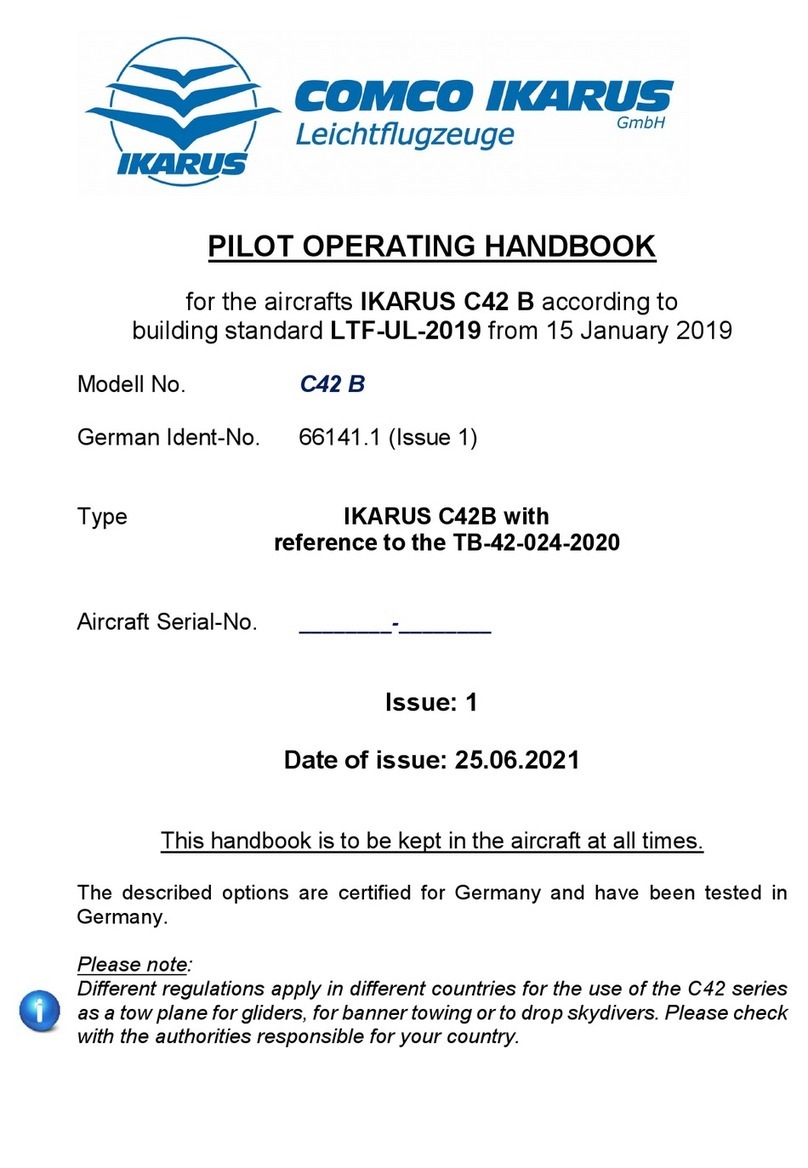
Comco Ikarus
Comco Ikarus C42 B Pilot operating handbook

Ozone
Ozone Zero 3 Pilot's manual
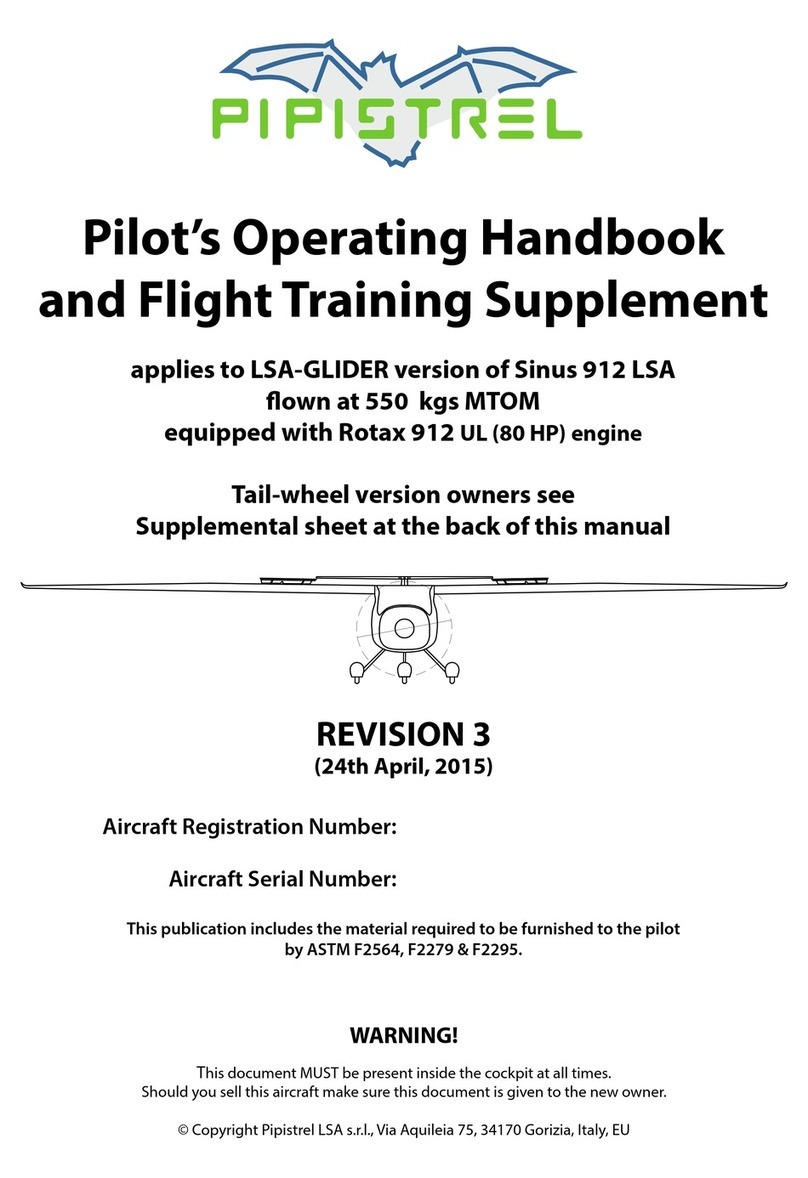
Pipistrel
Pipistrel Sinus 912 LSA LSA-GLIDER Pilot operating handbook
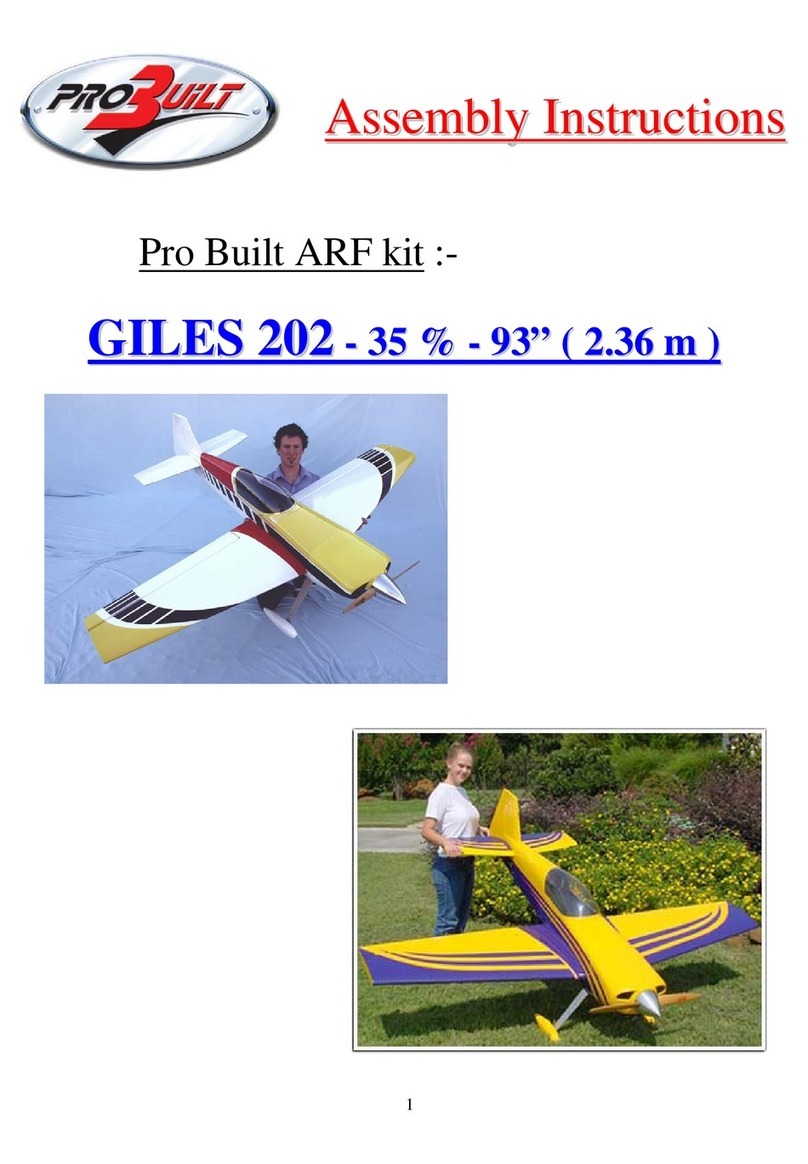
Pro Built
Pro Built GILES 202 Assembly instructions

Piper Aircraft Corporation
Piper Aircraft Corporation ARCHER II PA-28-181 Operating handbook

ICP
ICP VENTURA YY-MM-62 Series Pilot operating handbook

Alexander Schleicher
Alexander Schleicher AS 33 ES Flight manual
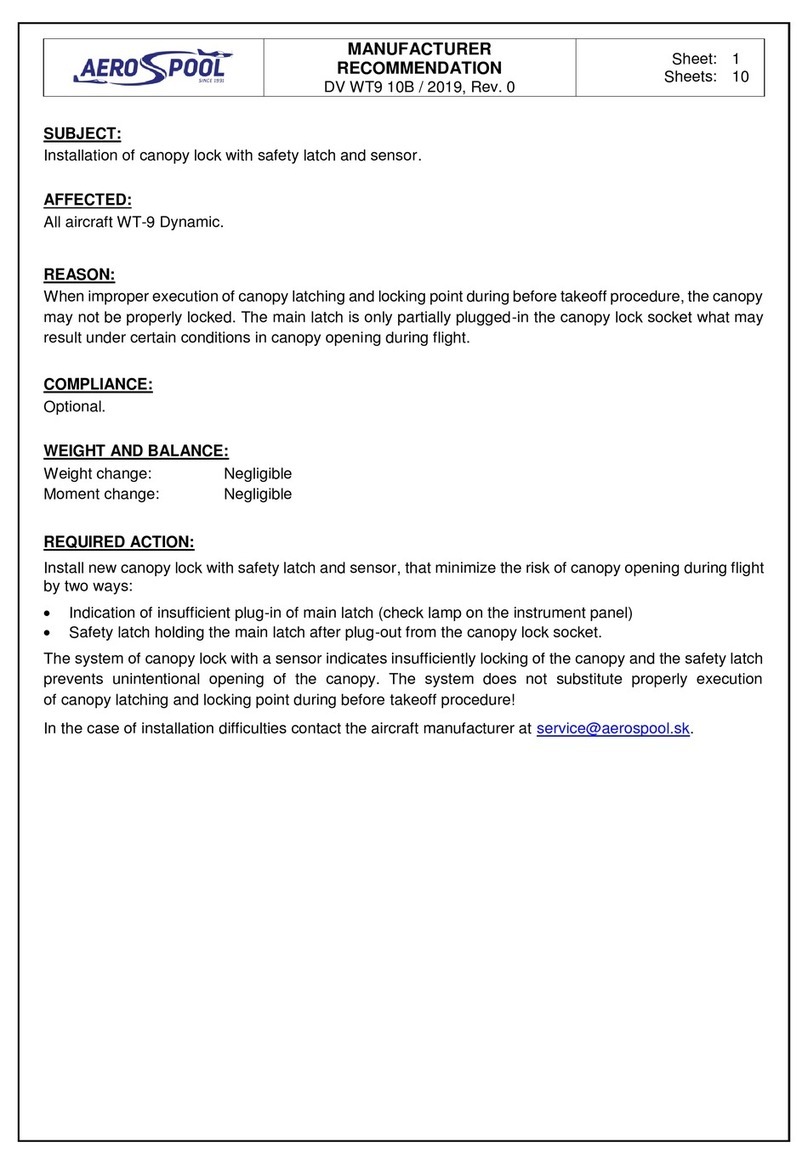
Aerospool
Aerospool WT-9 Dynamic Recommendation
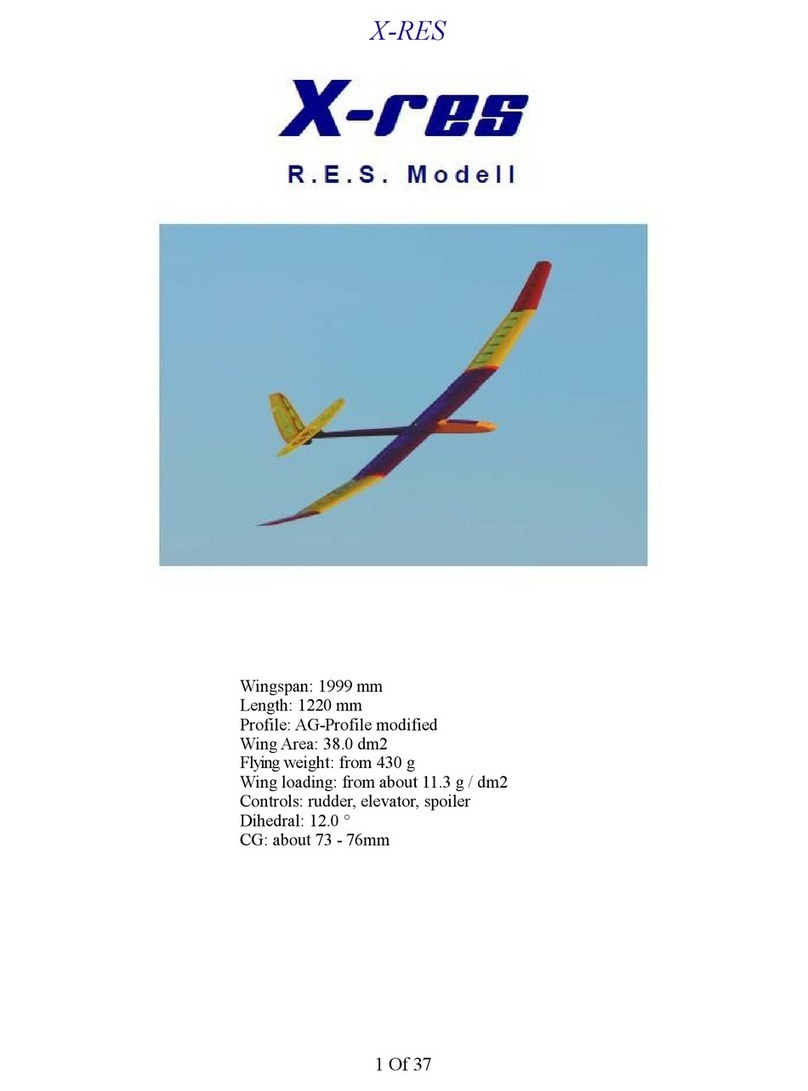
Hyperflight
Hyperflight X-res instruction manual

Piper Aircraft Corporation
Piper Aircraft Corporation Cherokee Lance PA-32R-300 Handbook
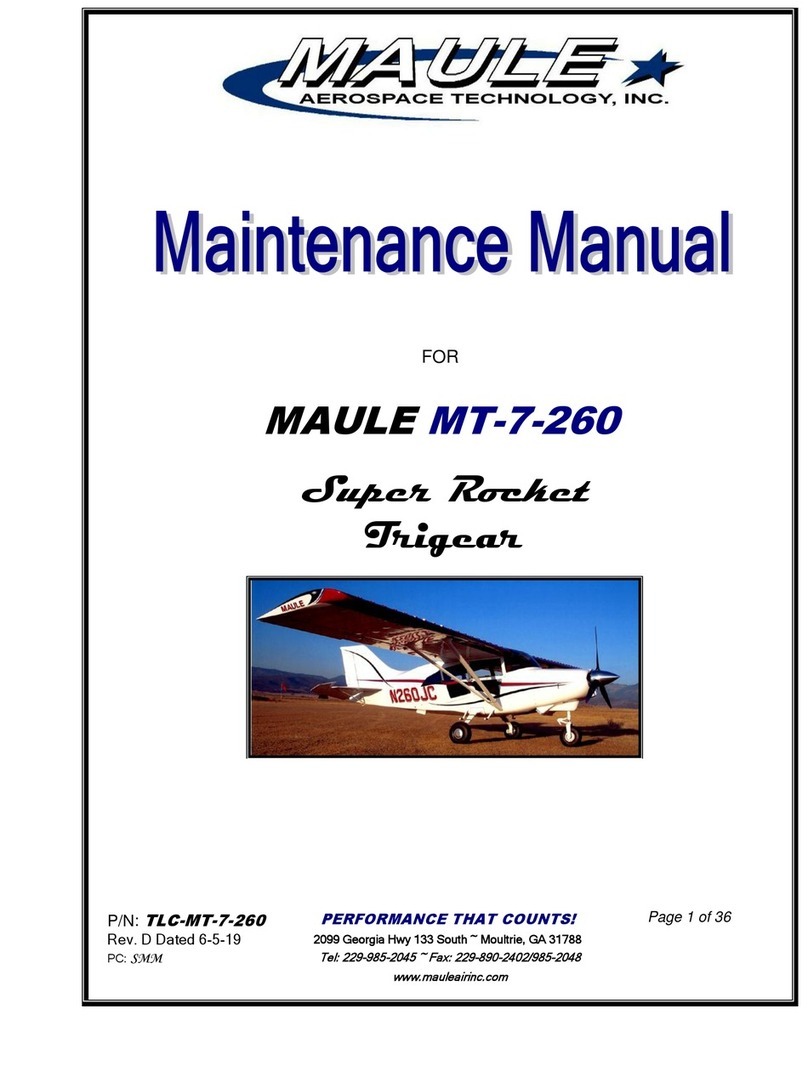
MAULE
MAULE MT-7-260 Maintenance manual

Cessna
Cessna Cardinal RG owner's manual



